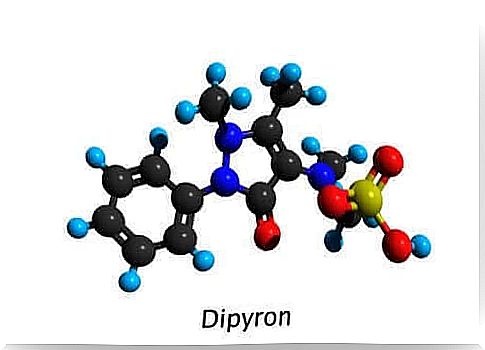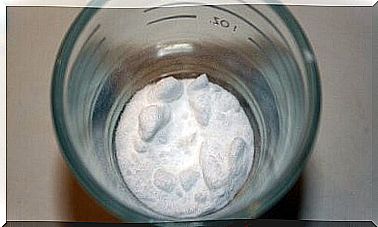Characteristics And Use Of Novalgin

Novalgin is a type of medicine that consists of metamizole or dipyrone. It belongs to the group, pyrazolone, and has analgesic and antipyretic effects. However, Novalgin also has less powerful anti-inflammatory and antispasmodic properties.
In this article you can discover the different characteristics and uses of novalgin.
This is how novalgin works

Like all medicines of the same group, dipyrone and metamizole work by inhibiting the action of cyclooxygenase. It therefore inhibits the synthesis of prostaglandin due to its analgesic and antispasmodic properties.
Despite this and despite the fact that its metabolites are also active and inhibit the synthesis of prostaglandin, its anti-inflammatory activity is not high.
In addition , metamizole can soothe and reduce the activity of the smooth muscles of the gastrointestinal tract and uterus. Dipyrone and metamizole can be given orally, intramuscularly and intravenously.
The liver quickly converts novalgin. It is converted into active metabolites, which are excreted in the urine.
Use of novalgin
Novalgin is used to treat post-traumatic or post-surgery moderate or serious pain and cramps. Doctors also give it in case of high fever, which does not respond to other drugs or antipyretics.
Dosages and contraindications

The dosage depends on the desired analgesic effect and the patient’s situation. In general, the typical oral dosage for adults is between 8 and 16 mg / kg of their body weight.
Parenteral administration is associated with an increased risk of allergic shock. To treat fever in children, doctors may give a dosage of 10mg / kg of their body weight.
The analgesic and antipyretic effects manifest themselves 30 to 60 minutes after it is given. Physicians should keep a close eye on parenteral dosages above 1 g due to the risk of high blood pressure.
Experts also recommend diabetics to take pills or tablets instead of syrup. In addition, patients with kidney or liver failure should avoid taking high doses.
In addition, in relation to contraindications, novalgin should not be used in the following situations:
- Hypersensitivity to pyrazolones.
- Acute or chronic kidney or liver failure.
- Blood dyscrasia
- Active stomach ulcers
- Heart failure
- Pregnant or breastfeeding women
Physicians should also evaluate their patients hematologically before treatment and periodically during treatment.
Side effects
Metamizole or dipyrone is a type of painkiller which, due to its toxic effects, especially due to its risk of allergic shock, was taken off the market in several countries. Available information indicates that its use results in violent reactions of hypersensitivity. These include:
- Allergic shock: Although not very common, it is a serious and sometimes irreversible reaction. Although its origin is unknown, it is an immunological reaction.
- Shock: Another serious hypersensitive reaction. Its symptoms are itching, cold sweats, drowsiness, nausea, shortness of breath and discoloration of the skin.
Allergic shock endangers the patient’s life and requires them to stop treatment. In these cases, the patient needs immediate medical attention.
In addition, the patient may also suffer from hypersensitive reactions associated with the skin, especially in the mucous membranes of the eyes and nose. Other reactions to novalgin include leukopenia, thrombocytopenia and hemolytic anemia.
Recommendations for healthcare professionals

The Spanish Agency for Medicines and Medical Devices (AEMPS) analyzed the situation of metamizole in Spain with regard to cases of allergic shock. For this reason, they insist that individuals remember that it is prescription medication. They also gave the following recommendations to healthcare professionals:
- Use metamizole only for short-term treatments of up to seven days.
- Could use this medication when it fits the approved recommendations and the least effective dosage.
However, if long-term treatment is needed, periodic haematological evaluations will be needed, including changes in the blood. Do not give this medicine to patients who cannot be evaluated.
Conclusion
Before giving novalgin, doctors should check the medical history in detail. In addition, they should avoid giving it to patients with a history of hypersensitivity or haematological reactions to this medicine. We hope this article on the use of novalgin has been helpful to you.









